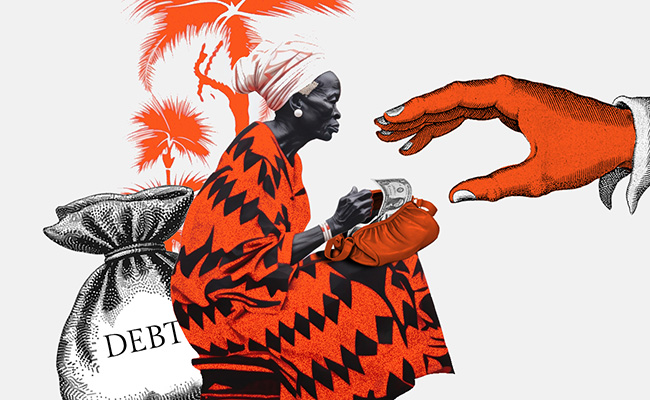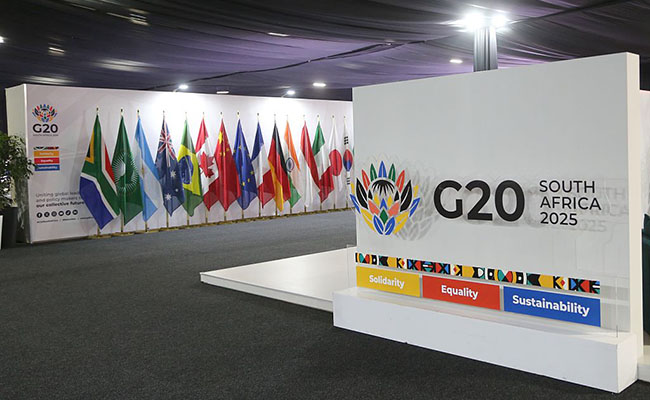There are two hard truths to why African governments pay far more to borrow than most of their peers: too many still fall short on transparency and credible governance, and too many investors and lenders still rely on outdated biases and lazy assumptions.
But whose truth carries more weight?
Regulators, bankers, ratings agencies, academics, ex-central bankers, funders, ex-government officials and other experts debated the topic at the Financing Africa Forward Summit, hosted by Standard Bank and Africa Practice in Joburg this week. And Currency was there.
What’s wrong with the conventional narrative?
“Default rates are really, really exaggerated”, causing misperceptions about how risky lending in Africa is, Africa Finance Corporation (AFC) president Samaila Zubairu said. As a result, the continent is paying higher interest on its debts because of a “prejudice premium”.
In fact, he argued, default rates on Africa’s project finance and infrastructure deals are in line with those of Western Europe and lower than those of Latin America and developing Asia. Only the Middle East scores better than Africa. Yet despite its comparable or better performance, African sovereigns pay higher interest rates on their loans and Eurobonds.
The AFC – a multilateral development finance institution – puts that additional cost, or penalty, at a massive $75bn a year.
To put that in perspective, the African Development Bank estimates Africa’s total infrastructure financing gap stands at $68bn-$108bn. According to data on the Mo Ibrahim Foundation’s website, total official development assistance to Africa from all donors totalled $73.6bn in 2023; remittances that year amounted to $90.8bn; foreign direct investment in 2024 was $97.1bn; while tax revenue in 2022 came to $479.7bn.
As Zubairu said, that premium is a “lot of money”.
Ndidi Okonkwo, president of the One Campaign, a global advocacy group dedicated to fighting poverty and preventable diseases, also bemoaned the cost of finance, pointing out that bondholders earn an average 9.8% yield on their African debt and only 6.5% on their Latin American debt.
More worryingly, research by the One Campaign found that African nations pay a staggering 500% premium on private loans compared to more favourable rates offered by multilateral development banks. This means that investors make eye-watering profits, with Okonkwo highlighting returns on infrastructure investments over the past 30 years as six times that of the S&P 500 index.
And the cost of that is human development. “When African governments spend 14% of their budgets on debt service, it means fewer teachers, fewer nurses, and fewer roads,” she added.
“Africa gets penalised for being Africa – not for actual data.”
But for many others, the issue is data – and not having enough of it.
How do investors and lenders see Africa?
To win investor confidence and lower borrowing costs, African governments must prioritise transparency and credibility, and embrace the ability to be “brutally” honest, Kuben Naidoo, a former deputy governor of the South African Reserve Bank and head of the budget office at the National Treasury, told attendees at the conference.
South Africa spent years building credibility after the 1994 elections by delivering world-class budget documents and through frank engagement with investors – even when the news was bad, he said.
“If you sugar-coat or mislead, they’ll find out,” he said, adding that having accurate data and strong institutions is good for government, too. “If I’m flying a plane, I want the instruments to tell me my actual altitude – not what I wish it was. If I think I’m at 30,000 feet but I’m really at 15,000, I’m in trouble.”
Having deep local capital markets would also reduce the cost of borrowing and dependence on external debt, as well as a broad suite of investment instruments, such as short-, medium- and long-dated government bonds and inflation-linked bonds.
Natalie Africa, interim director of economic opportunity Africa at the Gates Foundation, said developmental organisations are often confronted by “fragmented regulatory processes” when working on African projects. Approvals usually need to be sought 20 or 30 times even for promising innovations, such as drought-resistant crops or new health technologies, she said.
“What shocked us is that many African governments didn’t even know how much funding was coming in, or what it was being used for.” This lack of visibility has led to inefficiencies and exposed countries to sudden shocks when donor support is withdrawn. “So, yes – capital matters. But systems, transparency and governance matter more.”
While critical of the “crude pricing” mechanisms that investors often apply to African debt, former Central Bank of Kenya governor Patrick Njoroge emphasised the need for Africa to develop its own data systems, risk benchmarks and capital market infrastructure rather than rely on external institutions that may not understand local conditions.
One of the consequences, he said, is that “capital becomes not just expensive, but unavailable at times” – particularly when African countries need it most. This pushes governments towards concessional finance or politically risky bilateral deals.
Risk is also difficult to price when there is little to work with. “Our research shows that 40% of African countries and 90% of African corporates and permanent institutions lack any credit rating of any kind,” Richard Kiplagat, a partner at Africa Practice, said. “So, there’s a big gap in terms of access to that kind of information.”
Out of step with reality?
Other data points are chipping away at the myth of Africa’s excessive credit risk.
Adnan Q Khan, the chief credit officer at the International Finance Corporation (IFC), the largest development finance institution focused on the private sector, noted that “recovery rates in Sub-Saharan Africa are among the highest, around 78% – compared with the global average of 72%-74%”.
This suggests that investor perceptions are not aligned with reality. The IFC has created a tool called the Global Emerging Markets Risk Database, or GEMS, which compiles credit risk data from development finance institutions to challenge existing perceptions.
That shift could unlock not just cheaper borrowing for African sovereigns, but also more private-sector investment, which Khan argued offers “compelling diversification opportunities” beyond sovereign exposure.
Some caution is understandable, though. Ghana, Zambia, Malawi and Ethiopia have defaulted on Eurobond obligations in recent years, and Mozambique’s $2bn “tuna bond” scandal – where loans were issued without parliamentary approval – remains a notorious case of misgovernance. These episodes fuel justified investor wariness, but critics argue that the response from global markets has been overly broad, penalising the entire continent rather than pricing risk country by country.
“Yes, Ghana and Zambia defaulted. But do we really believe that two cases define an entire continent?” said One Campaign’s Okonkwo.
Investors need to move beyond headline-grabbing defaults and reassess creditworthiness based on fundamentals, not geography.
“When you price capital out of reach, you price development out of reach,” she said. “We want investment, not sympathy. We don’t want pity capital. We want fair capital.”
Top image: Rawpixel/Currency collage.
Sign up to Currency’s weekly newsletters to receive your own bulletin of weekday news and weekend treats. Register here.













